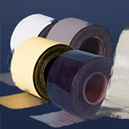Factors for Consideration When Installing Sealants in a Cold Environment
- 10 August 2016
- Posted by: Madhuraka
- Category: Article
 Low winter temperatures make everything contract, which is alright for us because we can just pull our coats tight and weather the cold. It’s different for building materials, though, because these materials literally shrink when the cold weather arrives. Fortunately, versatile sealants are imbued with compressible characteristics, so they can hang tight when contraction event peaks. That’s a handy feature to have on call, but what happens when the sealant is first installed? Is curing affected by the cold? Let’s answer these questions.
Low winter temperatures make everything contract, which is alright for us because we can just pull our coats tight and weather the cold. It’s different for building materials, though, because these materials literally shrink when the cold weather arrives. Fortunately, versatile sealants are imbued with compressible characteristics, so they can hang tight when contraction event peaks. That’s a handy feature to have on call, but what happens when the sealant is first installed? Is curing affected by the cold? Let’s answer these questions.
Living with Slow-Motion Curing Problems
The curing aptitude of a sealant begins its fall from grace when the temperature approaches freezing point. Energy is leeched from the product, chemical reactance is attenuated, and curing falters. In fact, most standard compounds suffer in this way when the cold weather drops below 4°C (40°F), so some means of keeping the local environment above this lower tolerance value must be adopted. On the visible side of things, a thin layer of frost is likely to form on the compound as it struggles to cure, so the sealant is further hampered by the formation of ice crystals.
Tips for Installing Sealants in a Cold Environment
Elastic bonds loose energy and lock in place when the environment gains an icy coating. The best tip here is to avoid this environment, sidestep its chilly influence by storing the product at room temperature for at least 24-hours before application. If a room temperature storage cupboard isn’t an option, maybe because this is a building site or an isolated workplace, then hire some space heaters. Create a manageable work zone that’s free of frost. Again, the chill factor may defeat such measures, so consider using an approved solvent to melt away icy buildup.
Know When to Veto Water-Based Sealants
We’re determined not to contradict past articles, especially when we’ve covered the environmentally detrimental effects of solvents, but this may be a time to switch tack. Water-based sealants assume a cloudy appearance and basically harden into a useless mass when temperatures dip below freezing point. On the other hand, solvent-based products are free of water, so they retain elastic functionality and are for more forgiving when winter is on the horizon.
There are a few other points to consider in this environmental study. The dew point is one, simply because condensation affects bonding during installation. Thankfully, there are thermally adept variants available on the markets, solvent-based products that cope well with the frost. Still, a temperature drop isn’t the only factor to consider when installing sealants in a cold environment. In other words, beware of condensation and structural contraction.

